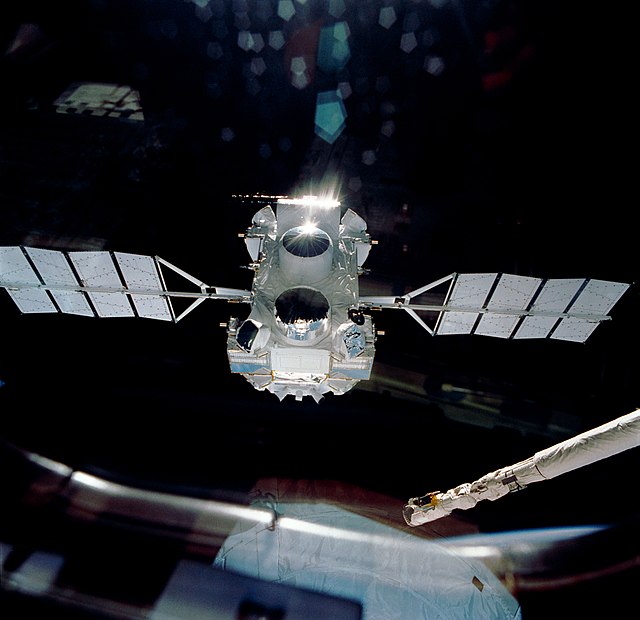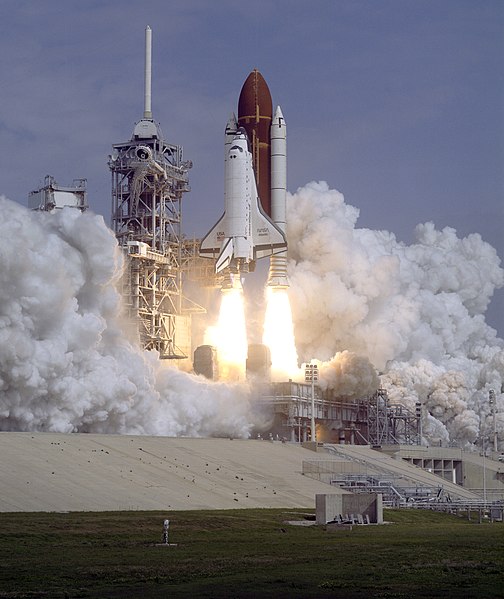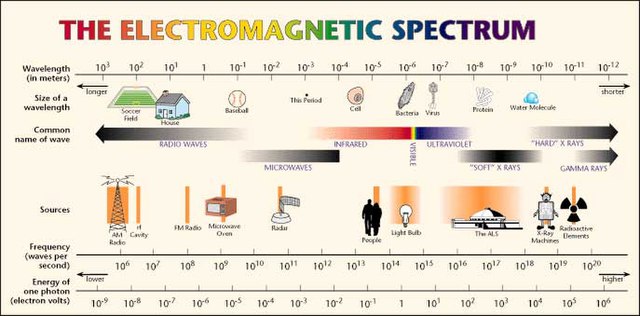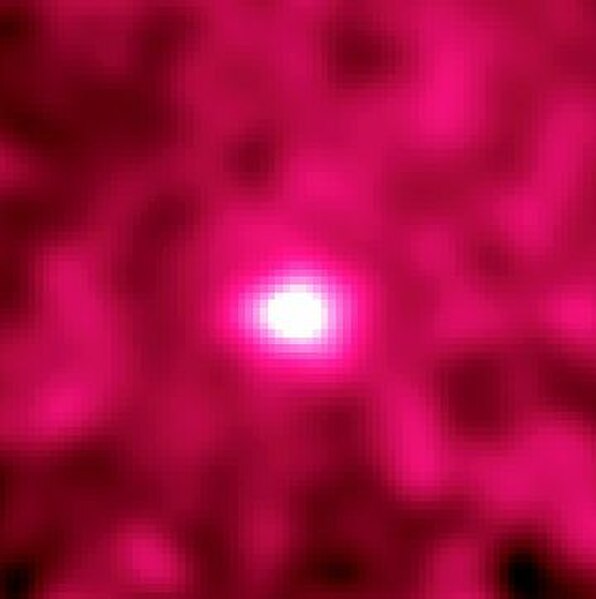Compton Gamma Ray Observatory
The Compton Gamma Ray Observatory (CGRO) was a space observatory detecting photons with energies from 20 keV to 30 GeV, in Earth orbit from 1991 to 2000. The observatory featured four main telescopes in one spacecraft, covering X-rays and gamma rays, including various specialized sub-instruments and detectors. Following 14 years of effort, the observatory was launched from Space Shuttle Atlantis during STS-37 on April 5, 1991, and operated until its deorbit on June 4, 2000. It was deployed in low Earth orbit at 450 km (280 mi) to avoid the Van Allen radiation belt. It was the heaviest astrophysical payload ever flown at that time at 16,300 kilograms (35,900 lb).
CGRO deployed in 1991
Launch of Space Shuttle Atlantis carrying the observatory to Earth orbit (STS-37)
Astronaut Jay Apt in the Space Shuttle bay with the observatory partially deployed but still attached to the Shuttle's robotic arm
Compton Gamma Ray Observatory cutaway
A gamma ray, also known as gamma radiation (symbol γ), is a penetrating form of electromagnetic radiation arising from the radioactive decay of atomic nuclei. It consists of the shortest wavelength electromagnetic waves, typically shorter than those of X-rays. With frequencies above 30 exahertz (3×1019 Hz) and wavelengths less than 10 picometers (1×10−11 m), gamma ray photons have the highest photon energy of any form of electromagnetic radiation. Paul Villard, a French chemist and physicist, discovered gamma radiation in 1900 while studying radiation emitted by radium. In 1903, Ernest Rutherford named this radiation gamma rays based on their relatively strong penetration of matter; in 1900, he had already named two less penetrating types of decay radiation (discovered by Henri Becquerel) alpha rays and beta rays in ascending order of penetrating power.
Gamma rays are emitted during nuclear fission in nuclear explosions.
NASA guide to electromagnetic spectrum showing overlap of frequency between X-rays and gamma rays
A hypernova. Artist's illustration showing the life of a massive star as nuclear fusion converts lighter elements into heavier ones. When fusion no longer generates enough pressure to counteract gravity, the star rapidly collapses to form a black hole. Theoretically, energy may be released during the collapse along the axis of rotation to form a long duration gamma-ray burst.
The Moon as seen by the Compton Gamma Ray Observatory, in gamma rays of greater than 20 MeV. These are produced by cosmic ray bombardment of its surface. The Sun, which has no similar surface of high atomic number to act as target for cosmic rays, cannot usually be seen at all at these energies, which are too high to emerge from primary nuclear reactions, such as solar nuclear fusion (though occasionally the Sun produces gamma rays by cyclotron-type mechanisms, during








